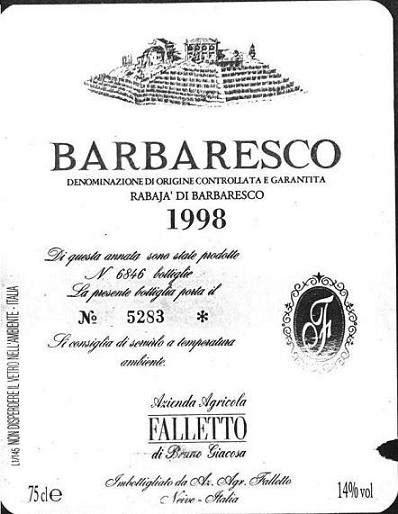1998 Barbaresco Red Blend
Falletto Di Bruno Giacosa Rabajà is a captivating red blend hailing from the prestigious Barbaresco region, renowned for producing some of the finest Nebbiolo wines in Italy. This vintage from 1998 showcases a deep, alluring ruby color that invites you to explore its complexities. On the palate, it reveals a full-bodied character, supported by vibrant acidity that adds a delightful freshness to the wine. The aromas unfold with prominent notes of dark fruit, floral hints, and subtle earthy undertones, creating an inviting bouquet. The tannins are firm yet beautifully integrated, offering structure without overwhelming the fruit. This red blend is dry, making it a versatile companion for a range of hearty dishes, and it reflects the unique terroir of Barbaresco beautifully, ensuring a memorable tasting experience.
Falletto Di Bruno Giacosa Rabajà is a captivating red blend hailing from the prestigious Barbaresco region, renowned for producing some of the finest Nebbiolo wines in Italy. This vintage from 1998 showcases a deep, alluring ruby color that invites you to explore its complexities. On the palate, it reveals a full-bodied character, supported by vibrant acidity that adds a delightful freshness to the wine. The aromas unfold with prominent notes of dark fruit, floral hints, and subtle earthy undertones, creating an inviting bouquet. The tannins are firm yet beautifully integrated, offering structure without overwhelming the fruit. This red blend is dry, making it a versatile companion for a range of hearty dishes, and it reflects the unique terroir of Barbaresco beautifully, ensuring a memorable tasting experience.




